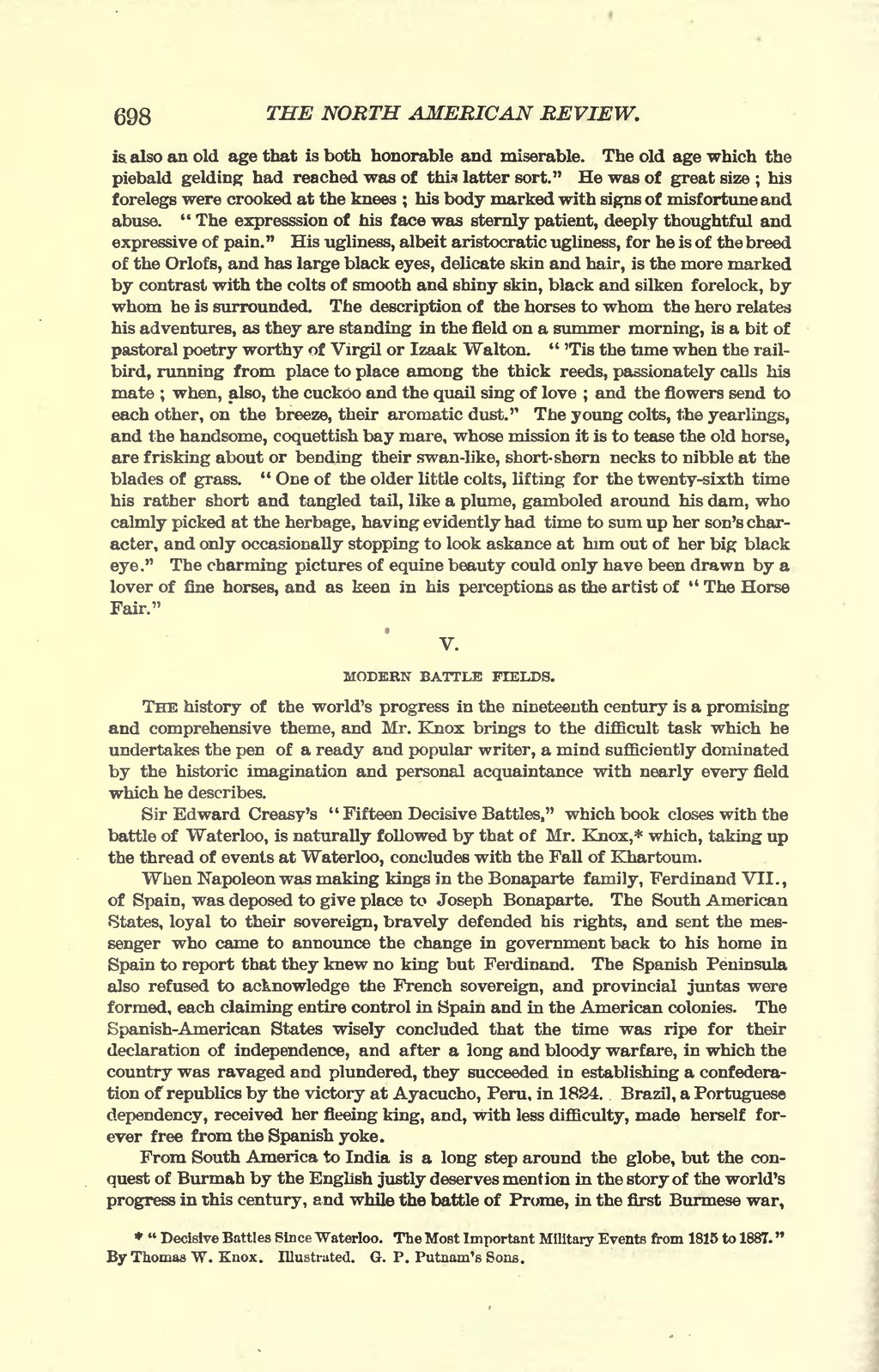is also an old age that is both honorable and miserable. The old age which the piebald gelding had reached was of this latter sort." He was of great size; his forelegs were crooked at the knees; his body marked with signs of misfortune and abuse. "The expression of his face was sternly patient, deeply thoughtful and expressive of pain." His ugliness, albeit aristocratic ugliness, for he is of the breed of the Orlofs, and has large black eyes, delicate skin and hair, is the more marked by contrast with the colts of smooth and shiny skin, black and silken forelock, by whom he is surrounded. The description of the horses to whom the hero relates his adventures, as they are standing in the field on a summer morning, is a bit of pastoral poetry worthy of Virgil or Izaak Walton. "Tis the time when the railbird, running from place to place among the thick reeds, passionately calls his mate; when, also, the cuckoo and the quail sing of love; and the flowers send to each other, on the breeze, their aromatic dust." The young colts, the yearlings, and the handsome, coquettish bay mare, whose mission it is to tease the old horse, are frisking about or bending their swan-like, short-shorn necks to nibble at the blades of grass. "One of the older little colts, lifting for the twenty-sixth time his rather short and tangled tail, like a plume, gamboled around his dam, who calmly picked at the herbage, having evidently had time to sum up her son's character, and only occasionally stopping to look askance at him out of her big black eye." The charming pictures of equine beauty could only have been drawn by a lover of fine horses, and as keen in his perceptions as the artist of "The Horse Fair."
V.
MODERN BATTLE FIELDS.
The history of the world's progress in the nineteenth century is a promising
and comprehensive theme, and Mr. Knox brings to the difficult task which he
undertakes the pen of a ready and popular writer, a mind sufficiently dominated
by the historic imagination and personal acquaintance with nearly every field
which he describes.
Sir Edward Creasy's "Fifteen Decisive Battles," which book closes with the battle of Waterloo, is naturally followed by that of Mr. Knox,[1] which, taking up the thread of events at Waterloo, concludes with the Fall of Khartoum.
When Napoleon was making kings in the Bonaparte family, Ferdinand VII., of Spain, was deposed to give place to Joseph Bonaparte. The South American States, loyal to their sovereign, bravely defended his rights, and sent the messenger who came to announce the change in government back to his home in Spain to report that they knew no king but Ferdinand. The Spanish Peninsula also refused to acknowledge the French sovereign, and provincial juntas were formed, each claiming entire control in Spain and in the American colonies. The Spanish-American States wisely concluded that the time was ripe for their declaration of independence, and after a long and bloody warfare, in which the country was ravaged and plundered, they succeeded in establishing a confederation of republics by the victory at Ayacucho, Peru, in 1824. Brazil, a Portuguese dependency, received her fleeing king, and, with less difficulty, made herself forever free from the Spanish yoke.
From South America to India is a long step around the globe, but the conquest of Burmah by the English justly deserves mention in the story of the world's progress in this century, and while the battle of Prome, in the first Burmese war,
- ↑ "Decisive Battles Since Waterloo. The Most Important Military Events from 1815 to 1887." By Thomas W. Knox. Illustrated. G. P. Putnam's Sons.
